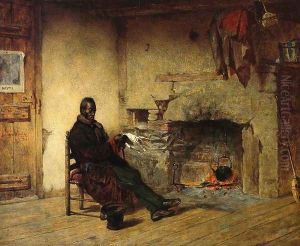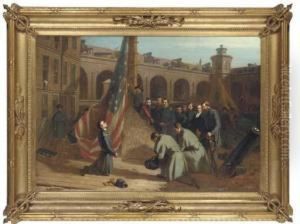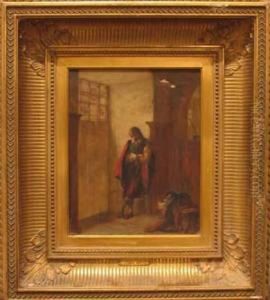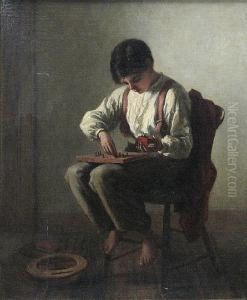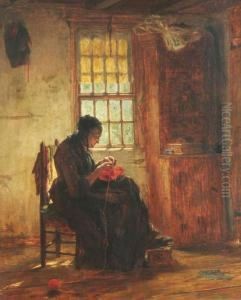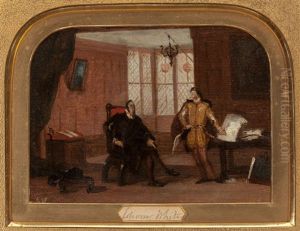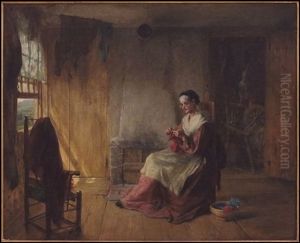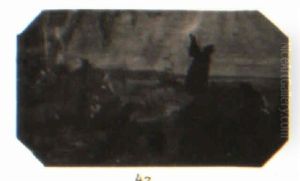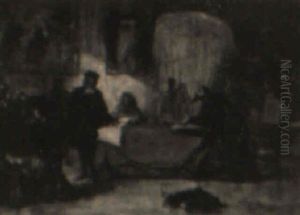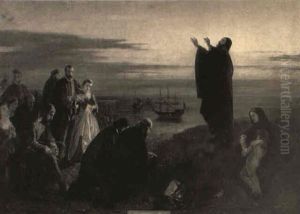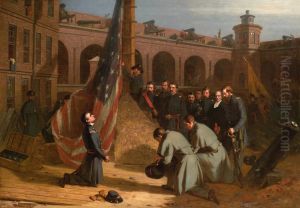Edwin White Paintings
Edwin White was an American artist born on October 21, 1817, in South Hadley, Massachusetts. He is known for his historical genre paintings and his dedication to American historical themes. White demonstrated a keen interest in art from a young age, and in pursuit of his passion, he moved to New York City where he attended the National Academy of Design.
After honing his skills, White decided to further his studies in Europe, a common practice among American artists at the time who were seeking to refine their techniques. He spent a considerable amount of time in Paris, where he was influenced by the French academic painting tradition, and also traveled through Italy, absorbing the Renaissance masters' works.
Upon returning to the United States, White established himself as a painter of historical subjects. He gained recognition for his ability to bring pivotal moments in American history to life on canvas. His works often reflected a romanticized vision of the past, a trend that was prevalent among artists and writers during the mid-19th century.
Edwin White's most famous work is perhaps 'Washington Resigning His Commission,' which depicts George Washington relinquishing his military position after the Revolutionary War. This painting was commissioned by the state of Maryland and is still displayed in the Maryland State House. White's interest in American history didn't stop at the colonial period; he also painted scenes from the early republic and other significant events.
Throughout his career, White maintained a commitment to education and was actively involved in the art community. He served as Vice President of the National Academy of Design and was a respected teacher and mentor to younger artists.
White's later years were marked by a decline in health, and he passed away on June 7, 1877, in Saratoga Springs, New York. His legacy is that of a dedicated historian-artist who contributed significantly to the preservation and romanticization of America's historical narrative through his paintings. Although not as widely known today as some of his contemporaries, White's work remains an important part of the history of American art, offering insight into the cultural and patriotic values of his era.
